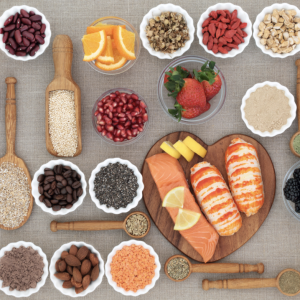Nourish And Flourish: How To Think About Food in 2022

Nourish And Flourish: How To Think About Food in 2022
January 12, 2022
The beginning of a new year is often a time to take stock and reconsider health and well-being, including diet, exercise, and sleep habits. As well, in times of chaos and uncertainty, thinking about food and what you are eating can give you some sense of order and control. When the world is off-kilter, planning your next meal or choosing a food treat can be a source of comfort. Furthermore, eating food that makes you feel good and supports your health can be a source of strength as you gird yourself for whatever may come your way. In that regard, it’s helpful to see what experts are recommending when it comes to your meal planning and eating for this year.
Once again, as in the past five years, US News and World Report has just named the Mediterranean Diet as the best overall diet. Nutrition experts examined over 40 different eating plans and ranked them according to such factors as nutritional value, ease of following, and benefit for such health concerns as heart disease and diabetes. With specific regard to older adults, this year’s food recommendations and tips focus on such concerns as calorie reduction, protein intake, and acknowledging that whatever eating plan is suggested has to be easy, affordable, appealing, and realistic. The goal really is to develop and incorporate an eating strategy that melds with your lifestyle rather than imposes rigid- and unrealistic- mandates.
In fact, there are lots of recommendations for ways to rethink your eating to support health and well-being rather than confine you or make you miserable, as a strict diet might do. So, for example, a recent Medium post by science writer Cindy Heath utilizes ideas from the best-selling book How Not to Die: Discover the Foods Scientifically Proven to Prevent and Reverse Disease to suggest a framework for thinking about what to eat. Quoting from food expert Michael Pollan (“If it comes from a plant, eat it. If it was made in a plant, don’t.”), Heath uses a “stoplight” analogy to recommend what foods fall under a green light and are good to eat, what foods need the yellow light of caution and what foods should always cause you to immediately stop and think carefully. Of course, you already know that you should go for the green(s) as much as possible (focus on food that comes from the ground) though she acknowledges that every so often, everyone runs a red light!
Similarly, a recent article in the Washington Post, written by food expert Ellie Krieger, suggests small, manageable re-directs that can put you on a better, healthier eating path without making you feel guilty or miserable. Among her recommendations? Think of what you eat as “self-care” rather than self-control. And let go of any out-of-reach food ambitions you may strive for. Her philosophy? Good enough is not only just fine, it’s great. She’s also got suggestions for upping your leafy green intake, swapping out meat for plant-based proteins, and spicing up your everyday meals to lessen your reliance on salt, sugar, and fat.
Finally, several new studies have been published that examine the value of specific foods you may want to add to your daily plate. For example, with heart health concerns- either high blood pressure or heart attack or stroke risk, new data out of UCLA finds that grapes can considerably cut your risk of heart attack and stroke with their effect on the gut microbiome and cholesterol levels, and a small daily yogurt intake can be valuable for cutting blood pressure among those with hypertension, according to a new study out of Australia. Finally, if you’re looking to add “green” to your diet and perhaps lower your calorie intake (something important for those of us who are older) it appears that upping the number of avocados you eat each week can make a real difference!







